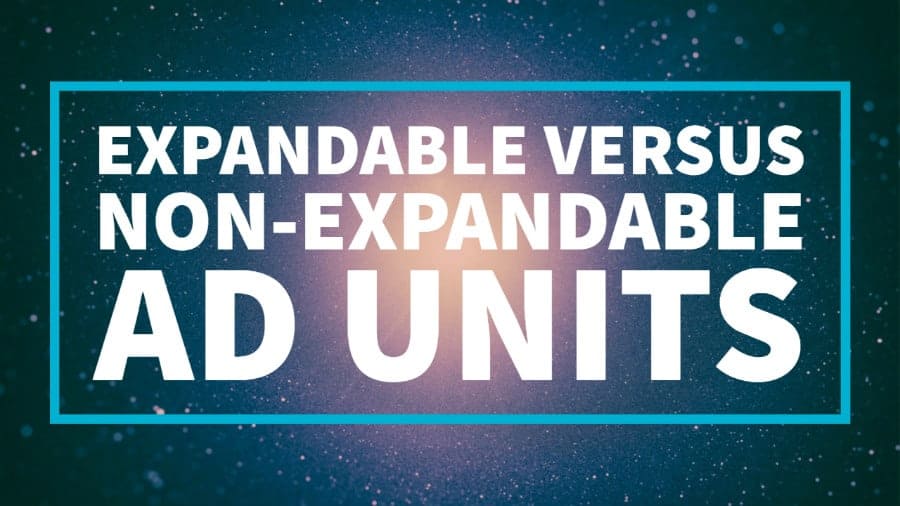
This post was most recently updated on September 15th, 2021
In the world of programmatic advertising, there are numerous strategies for a publisher to maximize site revenue. One major factor a publisher must always consider is the type of ad units to be utilized on the site.
Most types of ad unit DIV elements on the page handle the ad slots as non-expandable ad units (most commonly used) and expandable ad units. Let’s take a closer look at what differentiates one from the other.
This type of ad unit gets used by most publishers monetizing their sites and is offered by Google and the majority of ad networks. A general rule of thumb to follow when identifying this particular ad unit is the fact that it doesn’t expand. Display, video, sticky/anchor, and the rest of the most commonly used ad units fall into this category, as they have a more or less definite position in a user’s screen. They are not disruptive and can be easily ignored while the user browses the page’s content.
This type of ad unit expands or increases in size after the initial page load and is also known as rich media ads. These ad units don’t necessarily have to expand immediately and can be triggered by different actions such as scrolling through the page or after a set amount of time has passed.
Keep in mind that this type of unit is still rarely used by publishers. Not only are these types not available for use by most advertising campaigns, but this type of ad unit is also extremely intrusive. If you’re scrolling through an article while being heavily engrossed in the content, and suddenly an ad expands to the size of about 70% of your screen, chances are it will disrupt your experience.
Most website visitors will probably be able to tolerate this type of ad unit once in a while, so it’s best used with a frequency cap. The upside to expandable ad units is that their CPM’s are usually much higher compared to the standard or traditional placements. Still, if you care about how your visitors interact with your site, use them sparingly and with limited frequency.
Expandable creatives are best suited when served on pages with a Sync rendering mode where DIV elements on the page handle the ad slots.
In Async rendering modes the slots are created using an iFrame. An expandable creative can only render in an iFrame if it can break out of an iFrame. There are multiple approaches to serve expandable creatives in an Iframe which are listed below:
In this approach, the developers implement the functionality within the creative code, so that it can communicate with the DOM (Document Object Model) of the page and can break out of the size specifications of the iFrame, set initially.
Here, the functionality/capability of the creative to expand out of the iFrame is implemented in the iFrame itself through additional code changes and doesn’t require a specialized creative. This can be used to serve existing expandable creatives that aren’t iFrame friendly.
These are individual files that will be provided by each of the creative providers for their creatives to be able to expand out of an iFrame. These files will have to be uploaded onto the CDN where the site pages/resources are hosted and where the creative needs to render. Whenever the creative render on a page, it will seek out the buster files hosted on the domain’s hosting server, which will help the creative to break out of an iFrame.
#1: Higher user engagement– user engagement is essential to realizing a higher yield. With expandable ads, you can significantly increase brand awareness, message association, and allow instant data capture.
Advertisers can effectively get attention from potential customers by prompting them to interact with online advertisements.
#2: Higher performance level – research has shown that rich media ads, like expandable ads, have a click-through rate that is five times higher than non-rich media ads.
#3: Brand awareness – rich media ads, including expandable ads, increase brand awareness more than compared to standard display ads.
Deciding what type of ad units to allow on your site is a critical aspect of your site’s monetization success. Let MonetizeMore, a Google Certified Publisher Partner, help optimize your ad inventory. Sign up for a Starter account at MonetizeMore today!
10X your ad revenue with our award-winning solutions.